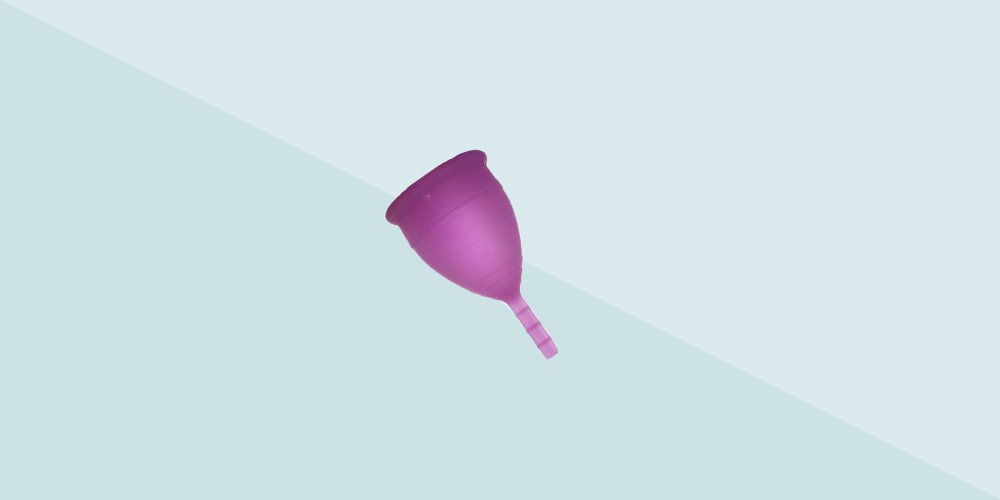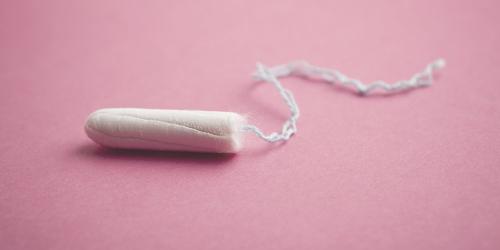The first time I heard about the menstrual cup, I admit I was backing up.
The idea of using one and the same protection for the rules is a little disgusting. Not a bit in reality.
However, when I was offered to test this "menstrual cup", I put my "a priori" aside.
Especially since according to the site manager UptoCup.fr, who agreed to accompany me (by far) in this test, "all the women who tested the menstrual cup were seduced."
What is a menstrual cup?
It is an alternative to tampons and sanitary napkins developed in the United States to collect menstruation.
Unlike traditional protections made of cotton and biocellulose, it is made of hypoallergenic medical silicone. His asset and more? It is reusable every month for several years provided it is well maintained.
The grip of the cup
After barely a week of waiting, she arrived in her charming purple satin cover. The object is unlike any other: it is a sort of silicone receptacle, quite rigid, which ends with a "rod" in the same material, a little less rigid than the rest.
First thought: it's quite bulky as an object. The cut is 7.5cm high (5cm for the "receptacle, and 2.5 for the tongue) and a little less than 4.5 cm in diameter. It is frankly far from the size of a buffer, even maxi.
The cut is delivered with a methodology and seems quite simple in terms of use: it folds on itself, it is inserted, and hop.
Menstrual cup: the first use
So I'm waiting for the monthly D-day to start taming my new girlfriend. Not very glam 'this appointment I realize it well, but the idea of testing it without "reason" seems absurd.
In short, first day and first emotions: if the folding is not complicated, the insertion is less obvious . It's probably very psychological as a blockage, but you have to do it again and again so that everything goes "naturally".
I admit that I am not serene for this first day of testing. So I check every half hour that everything is fine looking me back in cars, windows, the mirror office toilets ... A bit like when I was 14 years old and I was testing the pads for the first time .
Second obligatory stage (and traumatic): the moment when it is necessary to withdraw it.
To know: a priori, the cup is withdrawn and empties once in the morning (after the night) and once in the evening. No anguish, therefore, of an accident in the toilets of the office or any other public place.
So we catch the tongue and pull. Exactly as with a buffer in reality, except that the feeling is clearly not the same: we feel a kind of suction not very nice at all the first time, which we get used to.
An ecological (and economical) balance sheet
If the first two-three times were hesitant, the use becomes gradually intuitive. The fact that I am beginning to trust the object certainly helps.
I have no feeling of disgust any more since I am busy cleaning the object twice a day and boiling it between two uses. Some go as far as putting it in the dishwasher, but it's too much for me.
In fact, I must admit that I still returned to the "classic" protections in the middle of my test, during a weekend in the country, for comfort and fear of mischief.
But I must say that I am rather convinced for this alternative at the same time economic (a menstrual cup is changed every ten years) and ecological.
Because yes, by doing this test I became aware of all the potential harmful products present in tampons and sanitary napkins, perhaps had an impact on health.
I still advise the curious to be tempted and try on at least 3 months so they can take their marks before judging.
How much does it cost ?
I also tried to calculate the savings made by this cup, but it's not really speaking.
At a rate of 5 euros per package (tampons or towels), we save about 60 euros per year (excluding the price of the cut).
It takes between 15 and 30 euros depending on the brands and materials used.
Toxic shock syndrome: the menstrual cup, more "safe"?
Not necessarily. The potentially fatal infection syndrome called menstrual shock syndrome (SCT) is due to Staphylococcus aureus, a strain of bacteria that produces a particularly virulent toxin. However, many people carry this toxic strain, especially present in the nose, vagina or just on the skin, at some point in their lives.
Intra-vaginal hygiene protection, such as tampons and cups, retaining the blood inside the vagina, provides the latter with an optimal development environment. According to toxicologists, in the case of the development of toxic shock syndrome, technically, menstrual cups do not appear as a less risky alternative to tampons.
The only difference ? Their main component, medical silicone, while tampons are regularly subject to debate because of dozens of chemical molecules, including pesticides, they contain.




